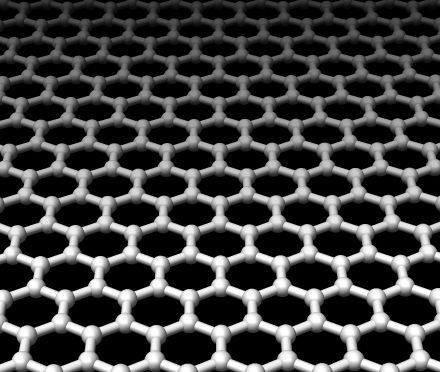Graphene FTVW
 This just in, from SWEDEN:
This just in, from SWEDEN:
Hexagons have won this year's Nobel Prize in Physics. More specifically, Andre Geim and Konstantin Novoselov won the prize for their work with hexagons.
In summary, for those who do not follow such things (and I have noticed that "graphene" is among the top keywords bringing people to this site, so it is quite possible you do follow such things): Graphene was "discovered," or if you will isolated, by Geim and Novoselov in 2004, by peeling off layers of graphite with scotch tape. It is essentially an indefinitely large aromatic molecule, and the flat, two-dimensional form of the buckyball or the buckytube. For a variety of reasons I won't get into here, it has numerous potential applications in electronics and nanotechnology, and is quite interesting all around.
It had never actually occurred to me prior to 2004 that graphene needed to be "discovered." I had always been taught that graphite, as a major allotrope of carbon, consisted of one-atom-thick sheets of carbon atoms arranged in a hexagonal lattice, and that this had been known for quite a while (since at least the advent of X-ray crystallography). Thus it really shouldn't have been too much of a conceptual leap to assume that, in fact, such sheets existed (though apparently the prevailing view was that the sheets would "roll up" when isolated). I still have a hard time wrapping my mind around the fact that it took until 2004 to actually discover this. Particularly with all the research that's gone on with fullerenes since the '80s, you'd think somebody, somewhere, would've taken the time to actually isolate a sheet of graphite. Apparently it is somewhat difficult, but crap I have scotch tape and pencils lying around, by all rights that Nobel could've been mine.
 I have been reading about the
I have been reading about the 